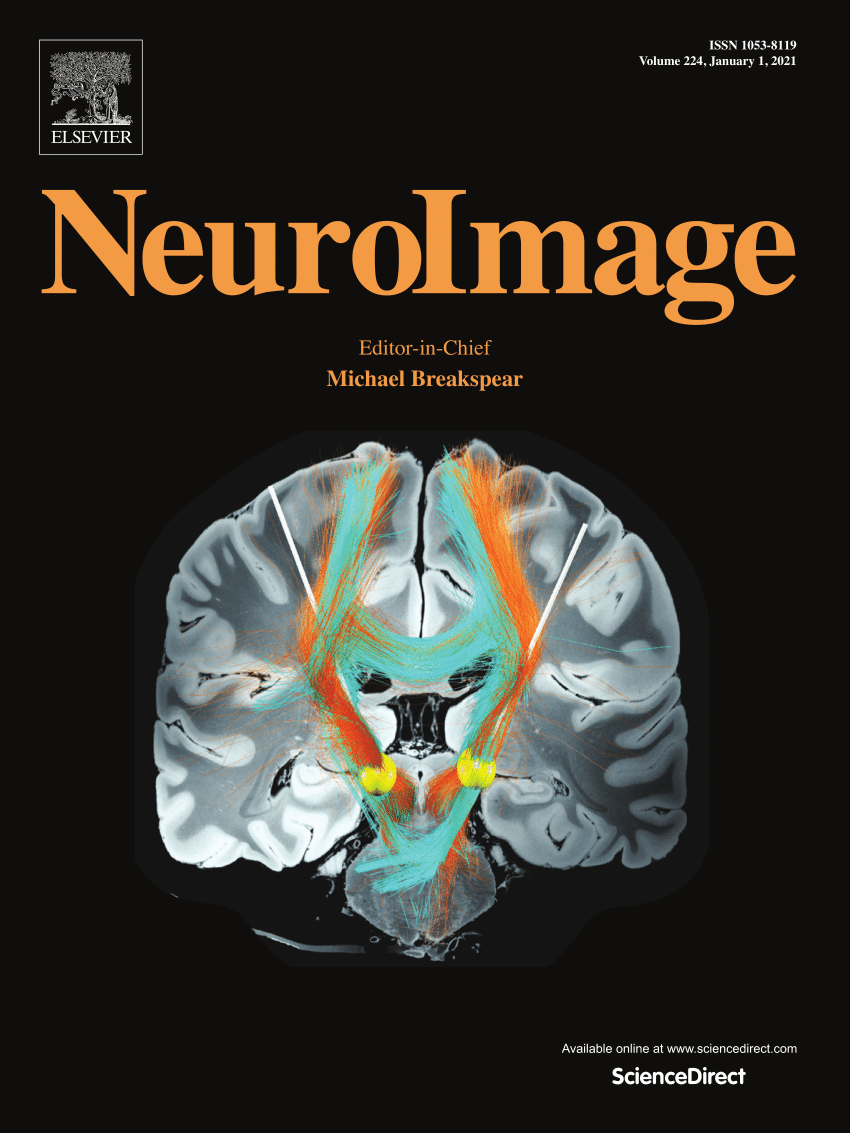In Vivo visualization of white matter fiber tracts in the brainstem using low flip angle double echo 3D gradient echo imaging at 3T
IF 4.7
2区 医学
Q1 NEUROIMAGING
引用次数: 0
Abstract
Background
White matter (WM) fiber tracts in the brainstem communicate with various regions in the cerebrum, cerebellum, and spinal cord. Clinically, small lesions, malformations, or histopathological changes in the brainstem can cause severe neurological disorders. A direct and non-invasive assessment approach could bring valuable information about the intricate anatomical variations of the white matter fiber tracts and nuclei. Although tractography from diffusion tensor imaging has been commonly used to map the WM fiber tracts connectivity, it is difficult to differentiate the complex WM tracts anatomically. Both high field MRI methods and ultrahigh-field MRI methods at 7T and 11.7 T have been used to enhance the contrast of WM fiber tracts. Despite their promising results, it is still challenging to achieve wide clinical adoption at 3T. In this study, we explored a clinically feasible method using a proton density weighted (PDW) 3D gradient echo (GRE) sequence to directly image the WM fiber tracts in the brainstem at 3T in vivo.
Methods
We optimized a 3D high resolution, double echo, short TR, PDW GRE sequence on 5 healthy volunteers using a clinical 3T scanner to visualize the complicated anatomy of WM fiber tracts in the brain stem. Tissue properties including T1, proton density and T2* from in vivo quantitative MRI data were used for simulations to determine the optimal flip angle for the sequence. The visualization of multiple WM fiber tracts in the brainstem was assessed qualitatively and quantitatively using relative contrast and contrast-to-noise ratio (CNR). To improve the CNR, the final images were created by averaging over all echoes from two consecutive scans at the optimal flip angle. The results were compared to anatomical atlases and histology sections to identify the major fiber tracts. All the identified major fiber tracts were labeled on axial, sagittal and coronal slices.
Results
The WM fiber tracts were found to have distinct hypointense signal throughout the brainstem and most of the major WM fiber tracts, such as the corticospinal tract, medial lemniscus, medial longitudinal fasciculus, and central tegmental tract, in the brainstem up to and including the thalamus were identified in all subjects. Both qualitative and quantitative evaluations showed that the 3° scan offered the best contrast for WM fiber tracts for a TR of 20 ms. The average over the first two echo times and two consecutive 3° scans gave a CNR of 47.8 ± 6.2 for the pyramidal tracts in particular and CNRs values greater than 6.5 ± 2.4 for the rest of the fiber tracts.
Conclusions
All the major fiber tracts in the brainstem could be visualized. Given the reasonably short scan time of 10 min at 3T, double echo PDW GRE sequence is a very practical approach for clinical adoption.
在 3T 下使用低翻转角双回波三维梯度回波成像对脑干白质纤维束进行体内可视化。
背景:脑干中的白质(WM)纤维束与大脑、小脑和脊髓的各个区域相通。临床上,脑干的微小病变、畸形或组织病理学改变都可能导致严重的神经系统疾病。直接和非侵入性的评估方法可以为白质纤维束和核团错综复杂的解剖学变化提供有价值的信息。虽然扩散张量成像的束成像技术已被普遍用于绘制白质纤维束连接图,但很难从解剖学角度区分复杂的白质纤维束。7 T 和 11.7 T 的高磁场 MRI 方法和超高磁场 MRI 方法已被用于增强 WM 纤维束的对比度。尽管这些方法取得了可喜的成果,但要在 3 T 下广泛应用于临床仍具有挑战性。在这项研究中,我们探索了一种临床上可行的方法,使用质子密度加权(PDW)三维梯度回波(GRE)序列在 3 T 下直接对脑干的 WM 纤维束进行活体成像:我们使用临床3T扫描仪在5名健康志愿者身上优化了三维高分辨率、双回波、短TR、质子密度加权GRE序列,以观察脑干中WM纤维束的复杂解剖结构。组织属性包括活体定量磁共振成像数据中的 T1、质子密度和 T2*,用于模拟确定序列的最佳翻转角。利用相对对比度和对比-噪声比(CNR)对脑干中多个 WM 纤维束的可视化进行定性和定量评估。为了提高 CNR,在最佳翻转角度下对两次连续扫描的所有回波进行平均,以创建最终图像。扫描结果与解剖图谱和组织学切片进行比较,以确定主要纤维束。所有确定的主要纤维束都在轴向、矢状和冠状切片上做了标记:结果:所有受试者的脑干中都发现了明显的低密度信号,脑干中的大多数主要脑干纤维束,如皮质脊髓束、内侧大脑半月板、内侧纵筋膜和中央被盖束,直至丘脑。定性和定量评估均显示,在20毫秒的TR时间内,3°扫描为WM纤维束提供了最佳对比度。前两次回波时间和连续两次3°扫描的平均值显示,锥体束的CNR值为(47.8±6.2),其余纤维束的CNR值大于(6.5±2.4):结论:脑干的所有主要纤维束均可视化。双回波 PDW GRE 序列在 3T 下的扫描时间很短,仅需 10 分钟,是一种非常实用的临床应用方法。
本文章由计算机程序翻译,如有差异,请以英文原文为准。
求助全文
约1分钟内获得全文
求助全文
来源期刊

NeuroImage
医学-核医学
CiteScore
11.30
自引率
10.50%
发文量
809
审稿时长
63 days
期刊介绍:
NeuroImage, a Journal of Brain Function provides a vehicle for communicating important advances in acquiring, analyzing, and modelling neuroimaging data and in applying these techniques to the study of structure-function and brain-behavior relationships. Though the emphasis is on the macroscopic level of human brain organization, meso-and microscopic neuroimaging across all species will be considered if informative for understanding the aforementioned relationships.
 求助内容:
求助内容: 应助结果提醒方式:
应助结果提醒方式:


